|
|
 |
|
The Campaign - Impact
What will be the impact of the Project?See also Alliance submissions to ERMP Vast Quantities of Seawater Required.Straits Salts' proposal involves the extraction of huge quantities of seawater via two or more massive intake pump stations. These pumps would also remove vast numbers of weakly swimming prawn and fish larvae and post larvae fish from the Gulf ecosystem and the fisheries. Toxic Bitterns.The proposal will involve the impoundment of enormous quantities of toxic bitterns, the highly concentrated by-product of solar salt product. This material could then enter the Gulf ecosystem through seepage or wall failure, potentially resulting in a major 'kill' event. Acid SulphatesThe excavated inland harbour and other infrastructure works may expose significant areas of acid generating sulphides as well as removing mangrove and algal mat habitat. Introduction of marine pests.The expected increase in marine international and domestic vessel traffic poses a high risk for the introduction of marine pests. Straits estimate 40-50 ships up to 100,000 tonnes will be loaded annually at 3000 tonnes salt production and increasing to 120-150 ships at 10,000 tonnes salt production. Each ship loading requires a number of barge loads from the production site which will necessitate a large dredge to establish a barge channel from the new boat harbour. From around the world and within Australia, there are many examples of Invasive Marine Species (IMS) being introduced and or translocated by a variety of vectors, including ballast water from international commercial shipping, biofouling on a wide range of vessels especially barges or dredges and natural vectors such as ocean current movements. Northern Pacific Seastar, Pacific oyster, European Fan Worm to name just a few. Specific threats to pearl oysters are the Asian Green Mussel and the Black Stripe Mussel which have the ability to wipe out the pearling industry if they take any hold due to the spectacular growth rates and smothering tendencies of substrate including pearl oysters. The establishment of an IMS in a new environment can threaten biodiversity and aquatic health, as well as specific industries dependent on marine resources. The pearling and prawn industries depends on pristine water quality conditions and the region between NW Cape and the WANT border (including Exmouth Gulf) produce the most conducive environment for producing the highest quality pearls in the world as well as world renowned export prawns. Large Panamax salt transport vessels and transfer/loading barges introduce the main vector for IMS translocation into Exmouth Gulf through ballast water and hull biofouling. Shipping - the Industrialisation of Exmouth GulfThe silty bottom of the eastern Gulf is likely to be mobilised by repeated dredging operations smothering marine producer habitats. The 300 metre long Panamax bulk carriers, barges and service vessels are likely to increasingly disturb and disrupt the use of the area by megafauna such as Humpback Whales, Dugongs and Sea-Turtles. The international shipping may transport exotic marine pests from high-risk regions such as the coast of China. The significant dredging required for the boat harbour and barge channel may also create changes in local drainage patterns, current directions and water circulation. 300 meter Panamax ships are huge - check out the photo of a Panamax bulker at Dampier port below. For a comparison the minimum and maximum lengths of an AFL oval are 135 and 185 metres respectively. For roundball afficionados, these ships are longer than three soccer pitches end to end. Straits Salts' ERMP states that there will be up to three of these anchored in the Gulf at any one time - presumably this means up to four bulk carriers could be at anchor or at sea in the Gulf at any one time. At anchor, each ship will have swing circle two kilometers in diameter.
The Wikipedia website (http://en.wikipedia.org/wiki/Panamax) gives a good summary of this class of shipping leviathans.
Latest shipping news. MSC Napoli, a Panamax scale container ship, founders in the sea off the Devon coast UK. See here for details (new window). ......and for disaster afficionados - more shipping
misadventures..... Nutrient Flows.The proposed building of the 70km long sea wall and modification of landforms and creek flow as per Straits' ERMP will change the nutrient regime in the area. The proposal is for redirection of the natural run off through two creeks to either end side of the 70 km seawall which will decrease the nutrient content in the water in the middle of the wall. The redirection of this natural run off has been poorly considered in the ERMP. Habitat modification will also occur for the inshore waters opposite the seawall and the inland areas of the Exmouth Gulf behind the seawall which are very important to fishing activities. The Straits Project is likely to alter existing habitat formats through redirection of important nutrients and the impact of bittern discharge or leakage. The eastern side of Exmouth Gulf requires flooding events which move a significant way inland and experience evaporation and nutrients are then returned to the Gulf during the next flooding event. The seawall proposal will greatly impact the natural nutrient flow from this process and significantly alter hydrology and salinity within the mangrove community thus altering the drainage and sedimentation and reducing the flushing of mangroves. It is expected the soil water table will rise causing water logging of mangroves and possible death of mangroves situated above the intertidal zone as has happened in Port Hedland.
That is, the research shows that it is highly likely that Straits Salt's strategy of diverting sheet floodwaters away from more than 70km of coastline adjacent to their project footprint, to point discharge sources to the north and south of their giant 410 square kilometre footprint, will result in an environmentally neutral outcome. To the contrary, environmental disaster might well be an early result.
|

![]()

![]()

Halt the Salt Campaign - Web Manager:
Dave Graham, Web hosting: ozup.com
Images copyright Wags and
Kelly
Halt the Salt Privacy statement
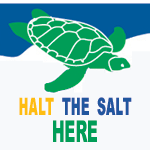
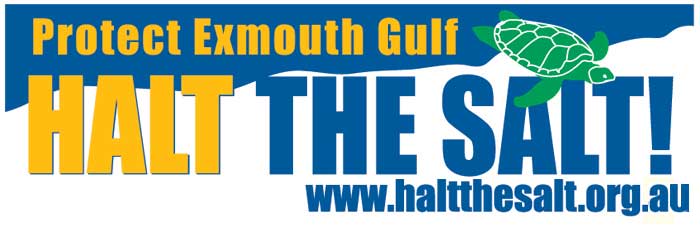
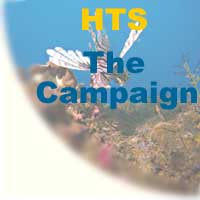
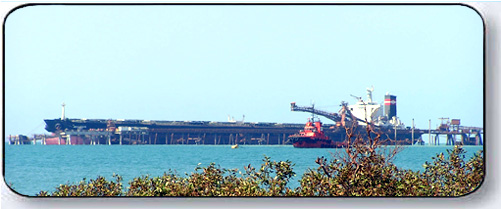
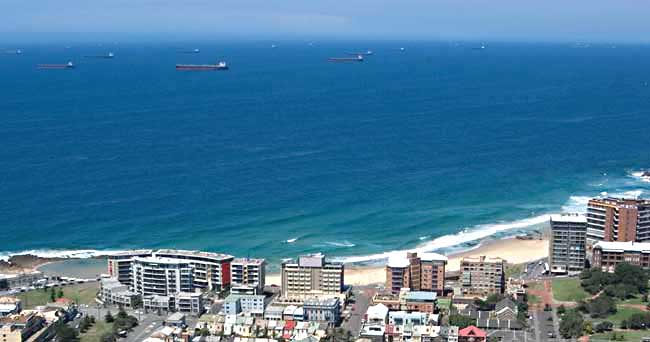
 Recent
Halt the Salt privately commissioned research (to be published shortly)
strongly indicates the great significance of uninterrupted nutrient
flows to the input and assimilation of nutrients to the Gulf is
of major concern to the marine Gulf environment. See right for a
graphic example of what constitutes 'uninterrupted nutrient flow'.
Then imagine how this image would appear if there was interposed
between the Yannarie delta and the Gulf, a five metre high continuous
seawall seventy to eighty kilometres in length!
Recent
Halt the Salt privately commissioned research (to be published shortly)
strongly indicates the great significance of uninterrupted nutrient
flows to the input and assimilation of nutrients to the Gulf is
of major concern to the marine Gulf environment. See right for a
graphic example of what constitutes 'uninterrupted nutrient flow'.
Then imagine how this image would appear if there was interposed
between the Yannarie delta and the Gulf, a five metre high continuous
seawall seventy to eighty kilometres in length!